Build Your Brand Strategy So It Drives Your Growth and Punches Above Your Weight
It’s amazing, but even with all my branding articles, videos, brand-building masterminds, workshops and speaking engagements, people still ask me, “Do I really need to brand my business or brand strategy?” Or they’ll say, “I’m a B2B startup; can’t I postpone this branding stuff for a bit?”
My answer’s are always the same, “Why would you want to? What makes your service or product special? How are you going to make your brand matter to customers? Why should they choose you over well-established competitors with an established track record? What are you going to do to earn their trust, generate higher perceived value and earn their custom?”
Take Warby Parker, the fashion eyewear startup that in 2010 decided to take on the establishment — a handful of companies with a virtual lock on the eyewear industry.

Image via Warby Parker
From the first, co-CEO and co-founder Neil Blumenthal and his fellow Wharton School MBA partners stressed over their brand strategy. And it’s paid off: In six years, Warby Parker has grown 500 percent,[1] and Bloomberg reports that investors now value the business at more than $1 billion USD.[2]
Suffice to say, if you want to punch above your weight — in terms of the competitors you can take on, the target audiences you can reach and the impact you can have in your industry — you need a really strong brand strategy, a compelling reason for customers to notice, trust, like and buy what you have to offer — product or service. Just consider:
- In 1981—the year Absolut Vodka launched its highly branded ad campaign — it was selling around 20,000 cases of vodka annually. By 1995, annual sales had grown to 3 million cases — a 14,900% increase in the business.[3]
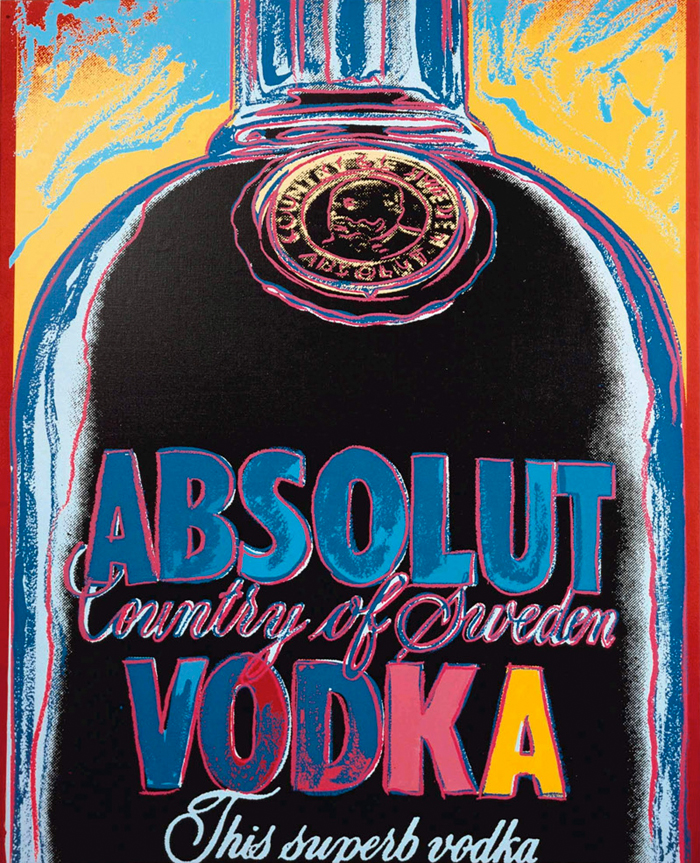
Image via Wikipaintings.org
- The “Hashtag Nation: Marketing to the Selfie Generation” study looked at more than 10,000 teen and young adult customers and their relationship to brands. More than 60% of 16-34 year olds agreed with the statement, “I encourage my friends to use the brands I really like.”[4] Think how much easier it is for friends to share your message when your brand strategy is clearly articulated — when both you and your customers know what your brand stands for and what makes it different, distinctive, memorable and more likeable compared to your competitors.
- When Singapore’s oldest telecommunications service, SingTel, wanted to promote faster connectivity, it took to Twitter with a highly branded flash campaign: #Need4GSpeed. For more than a day, it trended in Singapore, controlled more than 54% of the country’s Twitter conversations and increased website visits by 39% (visits remained above 30% for the month).[5]
- And if you want to beat the competition, take a page out of the Dollar Shave Club playbook. In just five years, their well-articulated brand strategy attracted more than 3 million members,[6] and Unilever’s decision to buy the startup for $1 billion USD.[7]
Having a brand strategy lets you promote the value of your products and services rather than the price. It’s that simple. And who wouldn’t rather sell value than try to compete on price?
Top Six Steps to Build a Powerful Brand Strategy
Here are six steps to help you develop a powerful brand strategy for your SMB / SME or new business. Although many of the examples and case studies below are from B2C businesses, virtually everything these businesses are doing will work in your B2B brand strategy.
1) Put Strategy Before Tactics…Find Your Point of View
Before you create a logo, pick your brand colours, settle on messaging or design your brand collateral, you need a brand strategy. Everything you learn in the process — about yourself, your customers and your competition — will help direct your tactics, your brand voice, your media choices. It all becomes so much clearer when you know your point of view and what you stand for. Apart from anything else, creativity without strategic rigour is a waste of money.

Image via Warby Parker
With a clear brand strategy, you won’t wonder if the world needs yet another cookie company, holistic healthcare business or financial or professional services business. You’ll know your reason for being and what makes you different…even unique.
Case Study #1: Warby Parker
Warby Parker co-CEO / co-founder Neil Blumenthal calls their brand strategy having a “point of view.” In turn, that point of view has helped establish a company culture that:
- Appeals to the value buyer (quality, style and affordability)
- Helps others with its CSR at the heart of the brand (“buy a pair, give a pair” helps low-income people who need glasses)
- Cares about the environment (the only carbon-neutral eyewear manufacturer)

Image via Warby Parker
The funky name, based on a couple of Jack Kerouac characters — Warby Pepper and Zagg Parker — the great customer service, brand culture, what the brand stands for and its fabulous user experience are all part of executing on the brand strategy. As Blumenthal explains, it’s easier going forward when you have everything worked out up front:
Takeaway: Notice how Warby Parker distills the financial premise behind its brand strategy: Intuitively it didn’t make sense that glasses cost as much as an iPhone. That’s brilliant.
2) What’s Your WHY?
You can’t have a truly successful strategy until you get down to the essence of WHY you are doing what you do…and then finding the words to explain your why to your audience. Listen to Simon Sinek’s TED Talk, “Start with Why:”
As Sinek explains, “People don’t buy what you do; they buy why you do it.”
When you can bond with customers at an emotional level, you have brand loyalty. According to the Gartner Group, “80% of your company’s future revenue will come from just 20% of your existing customers.”[8] These are your loyal fans.
But what if you could expand your loyal fan base and even increase their ardent devotion? That’s the potential when you can map your WHY, HOW and WHAT (Sinek’s Golden Circles) to how our brains make first an emotional connection and then a rational decision:
- Why – Lizard Brain (the old brain/our emotional gatekeeper)
- How – Amygdala (part of Limbic brain/responsible for emotional motivation)
- What – Neo-cortex (the rational brain)
It’s in the WHY where we feel and trust and develop loyalty. It’s emotion that drives behaviour. It’s emotion that drives customers to purchase your brand before over a competitor. Rational decisions only kick in after emotions are satisfied — the rational reinforces the emotional decision to buy.
As an exercise, think about what you believe in and the brands you admire because they share your values.
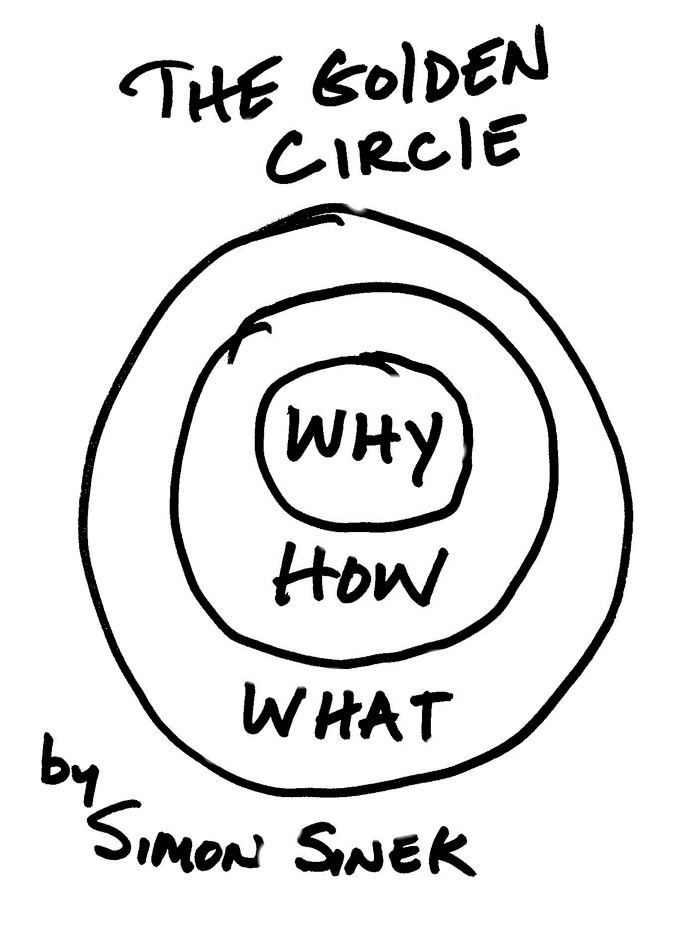
Image via Simon Sinek
To help you focus on your WHY and integrate it into your brand strategy so you can leverage throughout your SME / SMB business, Persona Branding and Design offers a variety of branding masterminds and masterclasses. These programmes are transformational. In particular, the Persona Brand Building Blueprint™ Mastermind is a comprehensive, two-day brand building intensive. In fact its an in-depth 10-step programme that will enable you to create your brand strategy from the ground up whether you’re revitalizing an existing brand or creating a new one.
Case Study #2: Apple Inc.
Although Apple makes great computers, tablets and phones, that’s not the message that generates brand loyalty. It’s the company’s willingness to think differently about how people interact with products, and that’s the message that comes through loud and clear in their brand strategy, product design and marketing.
Take a look at the legendary 1984 ad that only ever ran once — during Super Bowl XVIII. Notice how Apple connects emotionally through visual cues and very few carefully chosen words:
In 1997, Apple gave words to their WHY—“Think Different.” Almost two decades later, in its 2014 Perspectives ad, the company has remained focused on this enduring brand strategy:
Takeaway: While it doesn’t take a lot of words to convey your WHY, it does need to permeate everything you do. When you live and work by your Brand WHY, you generate incredible loyalty among your customer base.
3) You Can Brand Anything…and Probably Should
Intel’s distinctive bing…bong, bong, bong, bong is the audible signal that your PC is loading and all is right with your computing world. For us, it’s also an important reminder that you can brand virtually anything. Even products and components that are part of other companies’ finished goods. It’s called Ingredient Branding, and Intel first proved its effectiveness.
Case Study #3: Intel Corporation and Swarovski
In 1991, Intel Inside® revolutionized branding and proved that you can brand something that most customers will probably never see. In this case, Intel successfully branded a bit of silicon real estate on the computer’s motherboard. As Gary Shapiro, president and CEO of the Consumer Technology Association, explained, “…with consumers at a loss in trying to figure out what made one [computer] better than the other, Intel saw an opportunity…Intel’s leadership was convinced this was the way to grow market share…”[9]
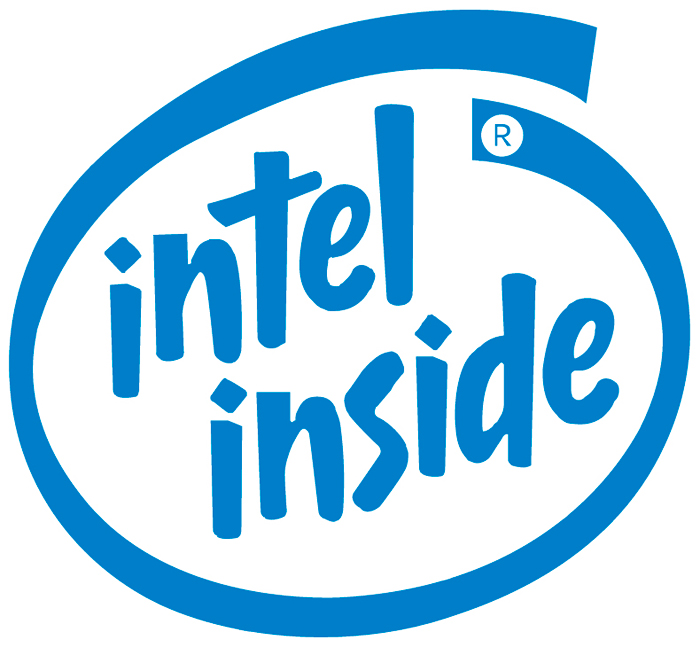
Image via Intel
Intel wasn’t selling speeds and feeds; it was selling trust and peace of mind. This branding strategy drew customers to computer brands with Intel Inside and refused to buy products without the Intel Inside brand promise. Through its revolutionary ingredient branding of an essentially invisible product, Intel achieved incredible trust with its customers.
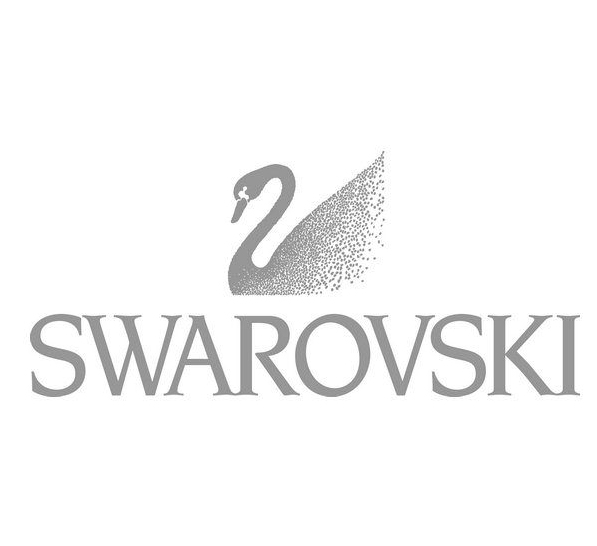
Image via Swarovski
Today, many companies use ingredient branding to build awareness and generate demand with manufacturers. Swarovski does this with its quality crystals. They’ve created such a high degree of caché for the Swarovski name, that its primary consumers seek it out on everything from clothing to shoes to quality lenses for eyeglasses to crystal-encrusted fake fingernails and more.
And even Jimmy Choo shoes:
Takeaway: The next time you wonder what an innovative branding strategy could do for your product or service, do like Intel: Open your mind to the possibilities and dare to think in a more original and creative way.
4) Be Your Authentic Self
There’s a phrase popular in American business, especially among SME / SMBs and startups still looking for their first big breakthrough: You have to “fake it until you make it.” In other words, you have to look bigger, more innovative, smarter and more established than, perhaps, you are…and certainly more than the competition. The good news is this is precisely what a strong, well developed brand strategy can do.
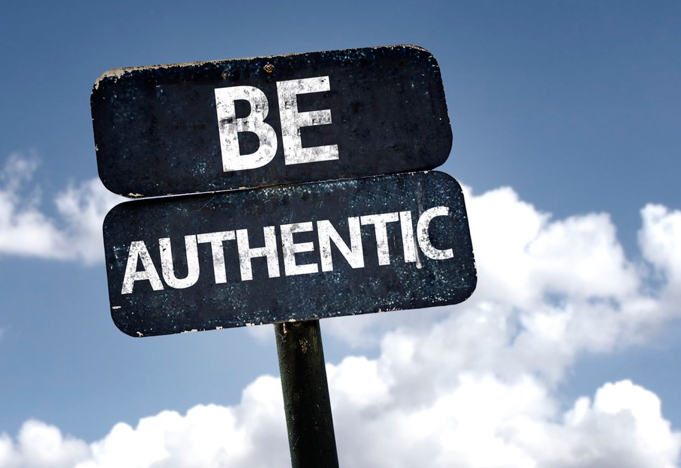
Image via Digital Intelligence Today
Faking it should never be about lying to or deceiving prospective customers. That’s always been unethical. And today when customers are looking for authenticity, anything less than your best will destroy your relationship with prospects and customers alike.
Here’s author Mike Robbins on the Power of Authenticity:
Co-founder of the Covey Leadership Center, Will Marré, talks about what authenticity means to your brand:
You become authentic, you convey your authenticity by walking the walk and making that part of your who, what and why. Think of it this way: If your WHY helps you build an emotional connection with customers, your authenticity enables you to keep those connections and even strengthen the bond.
While authenticity certainly is the way to the Millennials’ hearts,[10] it works with everyone — as we pointed out in our post, “Branding with Authenticity to Achieve Massively Increased Market Share.”
But beware. You can lose your authenticity with a few missteps…all the more reason to make it part of the core of your brand strategy.
5) Now Tell Your Amazing Story
So how do you begin to bring your brand strategy to people? How do you tell them your amazing WHY? How do you convey your authenticity? One way is to share your story — a topic we’ve discussed often here on our blog.
Our most recent two-part post entitled “Brand Stories: 5 Compelling Examples That Sell Themselves” is a good place to start: Part 1 and Part 2. And make no mistake, stories that are yet another extension of your brand strategy need to be part of your growth strategy.
We all love a good story. It connects with our hearts and sticks in our heads longer than a recitation of facts and figures and bold claims. But before you panic, you don’t need to be a novelist or even a great writer to tell your business story. You just need to speak from your heart, dig deep and tell the world who you really are and why you do what you do.
If you need help telling your story, Persona Branding and Design offers a six-step Brand Story Selling System™ designed for SMEs / SMBs, business owners and brand managers that want their stories to resonate with customers and prospects.
Angela Ahrendts, former Burberry CEO and now senior VP of Apple retail, explains how to weave authentic branding into story:
You can tell your story on YouTube and post it on your website. You can even share it on social media as an ongoing story that keeps people coming back for more as your story unfolds.[11]
Case Study #4: Norrøna
The Norwegian outdoor clothing company Norrøna has been a family-owned business since 1929. Today they are passionate about manufacturing durable, highly functional clothing and gear for adventurers — hikers, skiers, mountaineers, bikers and hunters.
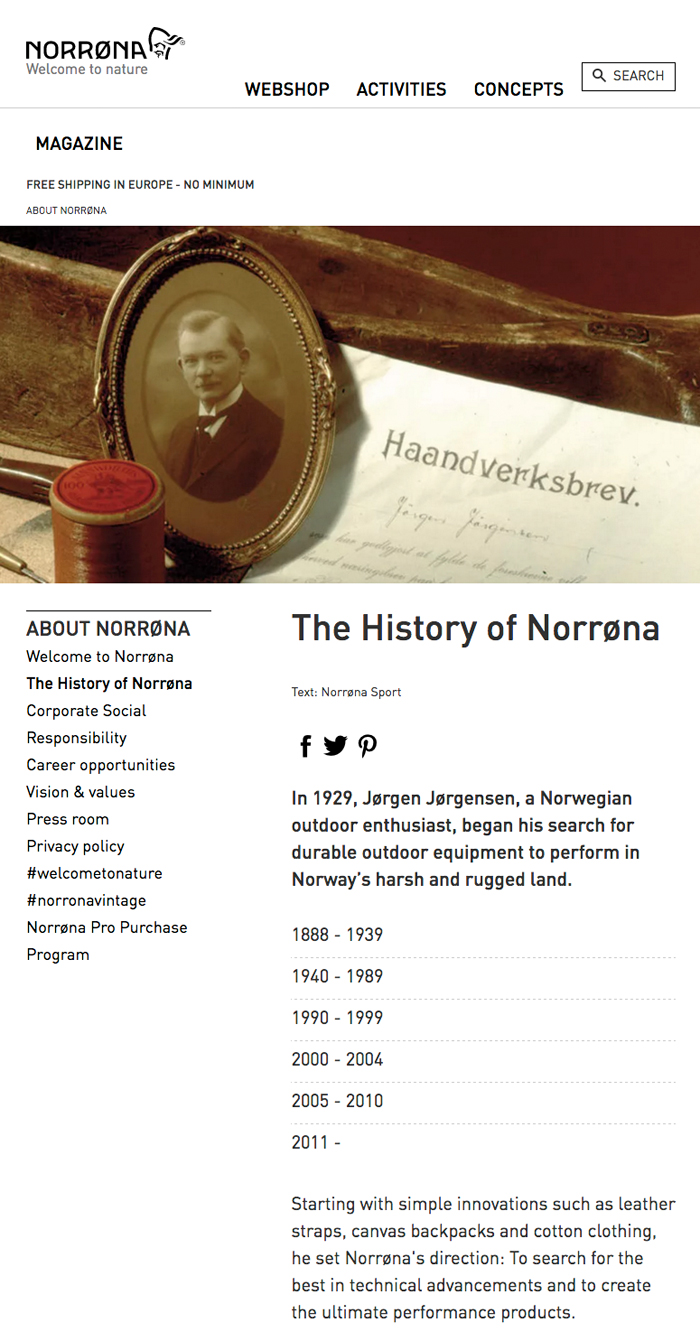
Image via Norrøna
In their video “Who Am I?” Norrøna tells its story in parallel with imagery that tells the story of its customers. In effect, Norrøna conveys its passion through the passion of its customers.
Takeaway: Be authentic, share your personality, create characters and give your story a beginning, middle and end. Above all, be compelling.
6) Brand Persistently, Extensively and Consistently
In addition to telling your story, your brand strategy needs to permeate everything you do. That’s the true key to being authentic. But extensive and persistent expression of your brand strategy is also about creating a consistent brand message and presence — giving your customers a safe harbour on which they can rely and trust.
And don’t forget to involve your employees: “Maximizing Profitability: Training Your Employees to be Brand Champions.” When you involve them in planning your brand strategy and keep them informed and engaged, they are your best brand ambassadors.
Here’s Sabrina Stoffregen, Intel’s former director of Intel Ambassadors, on the power of engaged employees:
Be bold. Be original. Be yourself. Just as your product, service and company are distinctive, so too should your brand. Consider the ways you can leverage your business through your brand so you won’t be dragged into the price or discounters rat race. That’s a losing game.
When you have a robust brand strategy, you’re ready to go out and share it with the world and compete above your weight.
And now you’re ready to think about tactics, but that’s a story for another day.
8 Tips for Using Your Brand Strategy as Your Business Blueprint
- Your brand strategy is the blueprint for your brand that keeps you focused on your WHY, your unique point of view and your message.
- Outline your target market — detailing who they are, what they want and what they expect from a brand. If you decide to change or expand your audience in the future, make it a strategic decision that is reflected in your brand strategy.
- As you develop a brand personality that represents you, your business, your sense of purpose, codify that into your brand strategy so you don’t lose your focus or deviate from a consistent presentation of your brand.
- Understand where you fit in the competitive jungle. While you don’t need to be overt in positioning yourself against the competition, you do need to understand how you fit…so you can find and carve out your own space.
- As you identify your most competitive or disruptive features, use your brand strategy to define the promise on which you will deliver.
- Use your brand strategy to cement that critical emotional connection with customers and prospects. Empower them to feel they are a part of your story.
- Be consistent; that’s key to establishing a brand identity that resonates viscerally. Whether people see your logo, a brochure, a video or a social media comment, they should immediately know it’s you.
- Make certain that your brand strategy permeates every aspect of your business.
[1] http://www.inc.com/eric-markowitz/3-reasons-warby-parker-is-killing-it.html
[2] http://www.bloomberg.com/news/articles/2015-03-04/warby-parker-said-to-draw-fund-interest-at-over-1-billion-value
[3] https://www.amazon.com/Absolut-Book-Vodka-Advertising-Story/dp/1885203292
[4] http://www.slideshare.net/HavasWorldwide/hashtag-nation-marketing-to-the-selfie-generation-3942773
[5] https://hbr.org/2013/06/make-your-brand-story-meaningf
[6] https://www.unileverusa.com/news/press-releases/2016/unilever-acquires-dollar-shave-club.html
[7] http://www.marketingprofs.com/opinions/2016/30706/market-disruption-your-brand-needs-to-create-a-ruckus
[8] http://www.forbes.com/sites/jerryjao/2014/11/19/why-customer-retention-is-king-the-evolution-of-retention-marketing-part-1/#72bd1cfe3eb7
[9] https://www.fastcompany.com/3004135/marketing-backstory-how-intel-became-household-name
[10] http://www.forbes.com/sites/karlmoore/2014/08/14/authenticity-the-way-to-the-millennials-heart/#19221983444a
[11] http://www.forbes.com/sites/theyec/2016/02/22/how-to-tell-your-brand-story-on-social-media/#bc6487b2d3a6


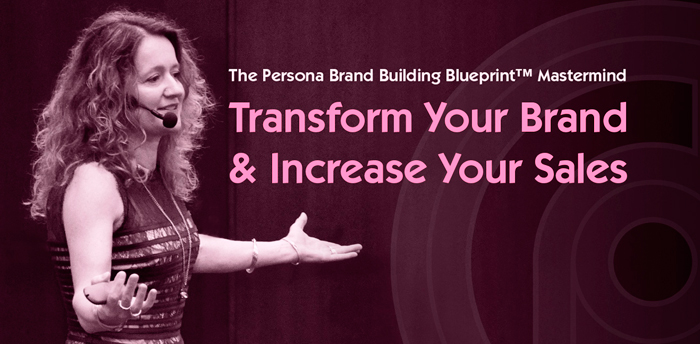





Leave a Reply
Want to join the discussion?Feel free to contribute!